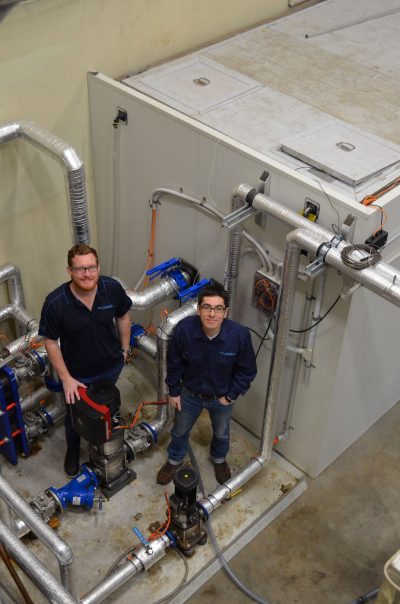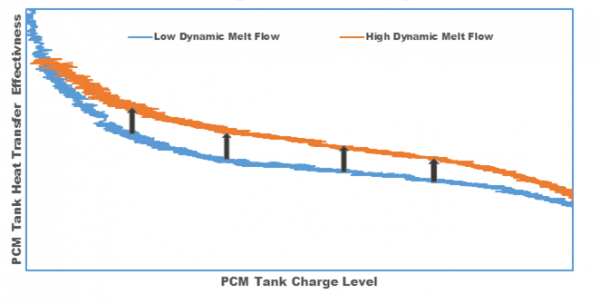In November 2018 we shared a story on the establishment of our ARENA funded Thermal Energy Storage (TES) test rig, constructed for testing the newly developed – 6 °c Phase Change Material.
https://www.linkedin.com/pulse/make-ice-while-sun-shines-rohan-wighton/
Since that time, the team has conducted over 50 charge and discharge cycles, storing and delivering each time over 1 MWh of thermal energy. This is equivalent to 2150 5 kg bags of party ice! The testing has been carried out under wide range of simulated load conditions to determine battery response characteristics.
One of the team’s objectives was to identify the most energy efficient and cost-effective way to maximize the heat transfer rate of the Battery ie. How quickly can we get energy ‘in’ and ‘out’ of the system. Using an agitating mechanism called “Dynamic Melt” with a single suction and multiple distribution point configuration, the team has demonstrated a positive relationship between the dynamic melt flow rate and energy transfer rate. Further work is being conducted on where the ‘sweet spot’ lies between invested electrical energy and stored / extracted thermal energy.
The next step in refining charge / discharge dynamics was implementing an enhanced Dynamic Melt System with multiple suction and distribution points. This configuration is thought to increase fissure creation within the frozen PCM, allowing for more effective energy transfer.
Through this work, as demonstrated in Figure 1, the team have been able to achieve a distinct improvement in average energy transfer rates.
As an additional benefit, the Dynamic Melt system helps with PCM stability and mixing for a long and useful life as evidenced by analysis of the PCM at ‘The Bend’ Tailem Bend Motorsports Park, which has been continually cycling in a commercial install since April 2018 with no signs of degradation.
In associated work, material testing continues. The chemical, corrosive and abrasive characteristics of the newly developed PCM on system materials are being tested. This testing has shown that all materials used in the TES system have performed well and show no signs of deterioration. Thanks to the test we have identified that replacing pump shaft seals with a hardened equivalent, increases their durability fivefold. Great news for service and maintenance teams.
Exciting times! Well done to the combined test team. See more about Glaciem technology at www.glaciemcooling.com

Raymond Liddle – Test Facility Manager & Hesam Semsarilar – Design Engineer – with the Glaciem Cooling TES test rig

Figure 1 : Improvements in energy transfer through Dynamic Melt adjustments

Leave A Comment